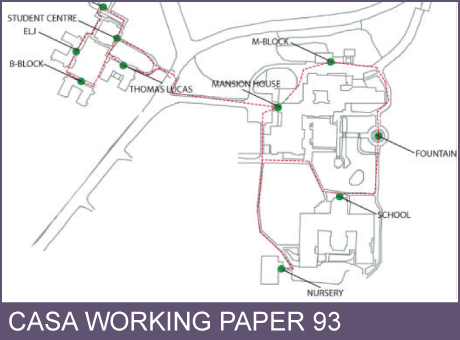CASA Working Paper 93

1 May 2005
Spatial representation and low vision: Two studies on the content, accuracy and utility of mental representations
The paper reports on two studies being conducted with students from Dorton College - Royal London Society for the Blind (RLSB) in Kent. The first experiment will examine the content and accuracy of mental representations of a well-known environment. Students will walk a route around the college campus and learn the position of ten buildings or structures. They will then be asked to make heading judgments, estimate distances, complete a spatial cued model and sequentially visit a series of locations.
The second experiment will examine the strategies and coding heuristics used to explore a complex novel environment. Students will be asked to explore a maze and learn the location of different places. Their search patterns will be digitally tracked, coded and analyzed using GIS software. Students will be tested using the same methods as in the first experiment and their performance level will be correlated with their exploratory patterns. Throughout the paper we are reminded that construct validity can only be secured by employing multiple converging techniques in the collection and analysis of cognitive data. Methods should be designed to test content and accuracy as well as the utility of mental representations.
This working paper is available as a PDF. The file size is 493KB.
Authors: Victor Schinazi
Publication Date: 1/5/2005
 Close
Close

